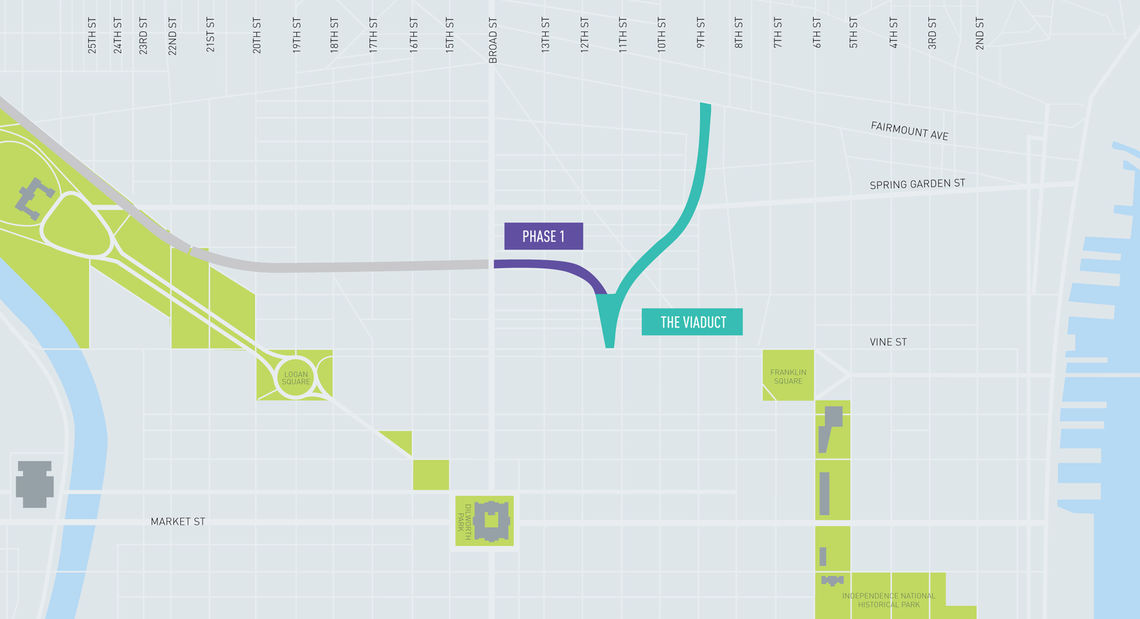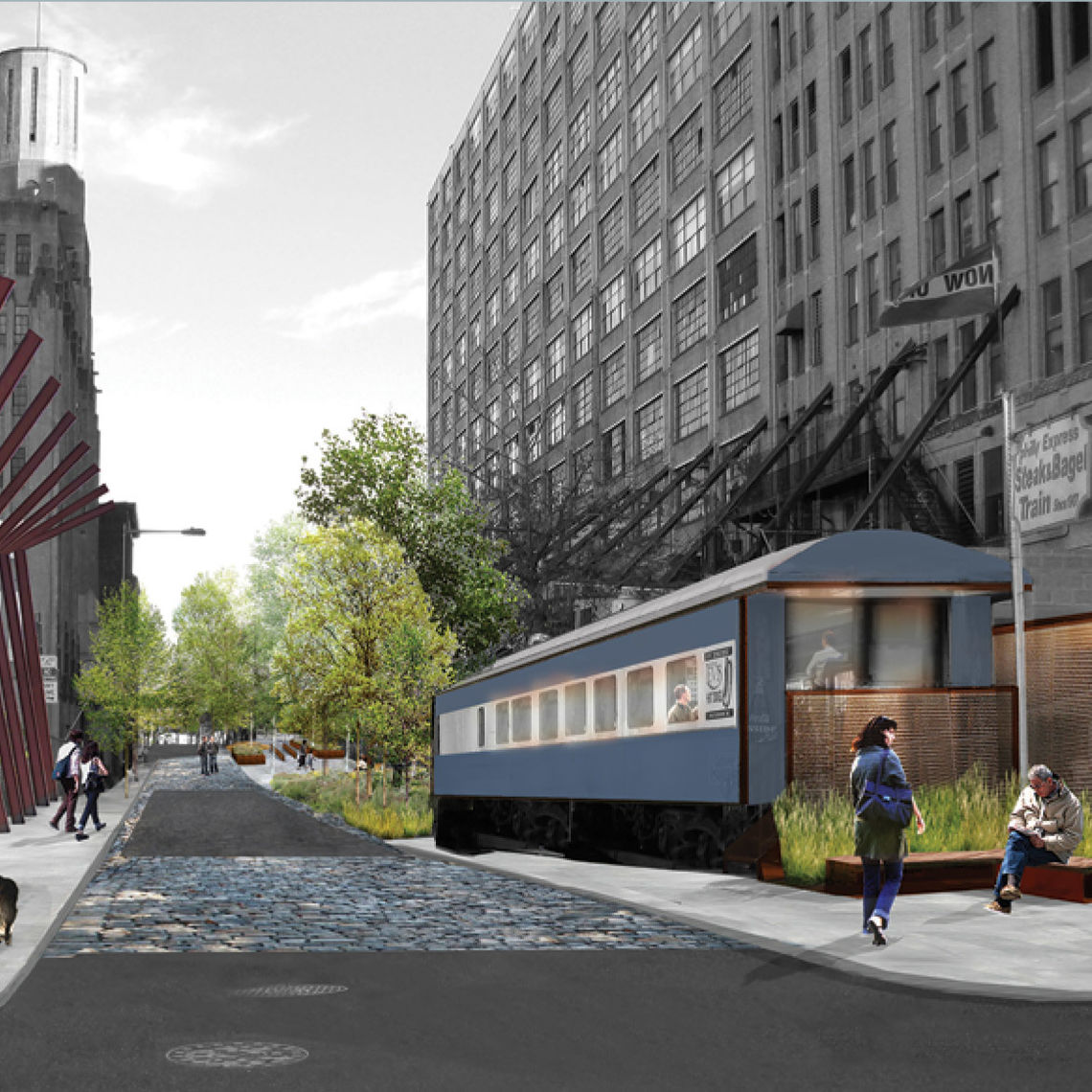
digest
Center City Digest, Fall 2016
Viaduct Rail Park: A Long Time Coming
Choose your narrative frame: Either good things take time; or it takes forever to get anything done in Philadelphia.
In 1984, 91 years of rail service came to an end on the elevated Reading Viaduct as the Center City commuter tunnel integrated two separate train operations underground into SEPTA’s Regional Rail system. Center City employers gained access to a 360-degree labor market, while the Viaduct and the upper floors of the Reading Terminal were rendered obsolete.
In this issue
- Viaduct Rail Park: A Long Time Coming
- CSR Mary Reynolds Enjoys Helping People
- Building on Success at Sister Cities Park
- Outdoor Seating Venues Join Growing Number of Outdoor Cafés
- Sips & Yappy Hour at Dilworth Park
- Rothman Institute Ice Rink and More Winter Highlights
A decade later, the Reading Headhouse and train shed were repurposed as a hotel and gateway to the Pennsylvania Convention Center. The bridge over Arch Street was reclaimed, but the portion of the viaduct running to the north side of Vine Street was demolished to make way for the convention hall and its service truck ramp. SEPTA briefly considered reusing the eastern branch for a new light rail line, but that soon passed. Instead, the industrial relic languished and was soon overgrown with trees, weeds and wildflowers.
In the fall of 2003, two local artists and viaduct neighbors, Sarah McEneaney and John Struble, attended a presentation by one of the original advocates for Manhattan’s High Line – three years before New York started construction and six years before first opening. Inspired, they formed the Reading Viaduct Project advocacy group in December 2003 and began beating the drum. Had they simply charged everyone a few dollars for the many tours they led, or installed tollbooths in the myriad holes that were cut in fences, the project might have been fully funded years ago.
Initially, I was skeptical, a non-believer. My conversion experience came only after walking the first phase of the High Line in late summer of 2009 and following Sarah and John the very next weekend in Philadelphia. We wandered slightly above the fray, curving over Philadelphia’s street grid, glimpsing views of the downtown skyline, the Ben Franklin Bridge, the Ukrainian Cathedral,
passing between an amazing array of empty and repurposed industrial buildings, warehouses, rowhouses and a depressing landscape of vacant, derelict lots.
The new Viaduct Rail Park will start its life, less a connecting link, like the Schuylkill River Trail, and more as a unique, re-imagined relic of the industrial age, the center-piece, anchor and stimulus for a mixed-use, mixed income, live-work neighborhood unlike any other in Philadelphia.
Though frustrating, the time between inspiration and construction start has helped. Lessons have been learned from the High Line in New York City about what to do and not to do; especially the importance of dedicated revenue for maintenance. Chicago’s Bloomingdale Trail and Atlanta’s Beltline have demonstrated clearly the interplay between quality parks and economic development and the potential to capture value induced by park enhancements. A host of similar initiatives are underway across the U.S. and in Canada, enriching the conversation about creative place-making.
But thanks to Governor Tom Wolf’s award of a $3.5 million Redevelopment Assistance Capital Program (RACP) grant, the wait is over. We move from Photoshop to shop drawings, from vision to construction. With the RACP grant, the CCD will have in hand nearly all the funds needed from foundation, state, city and private sources to build Phase I. We will proceed with construction as we continue to raise the remainder of funds. You can help!
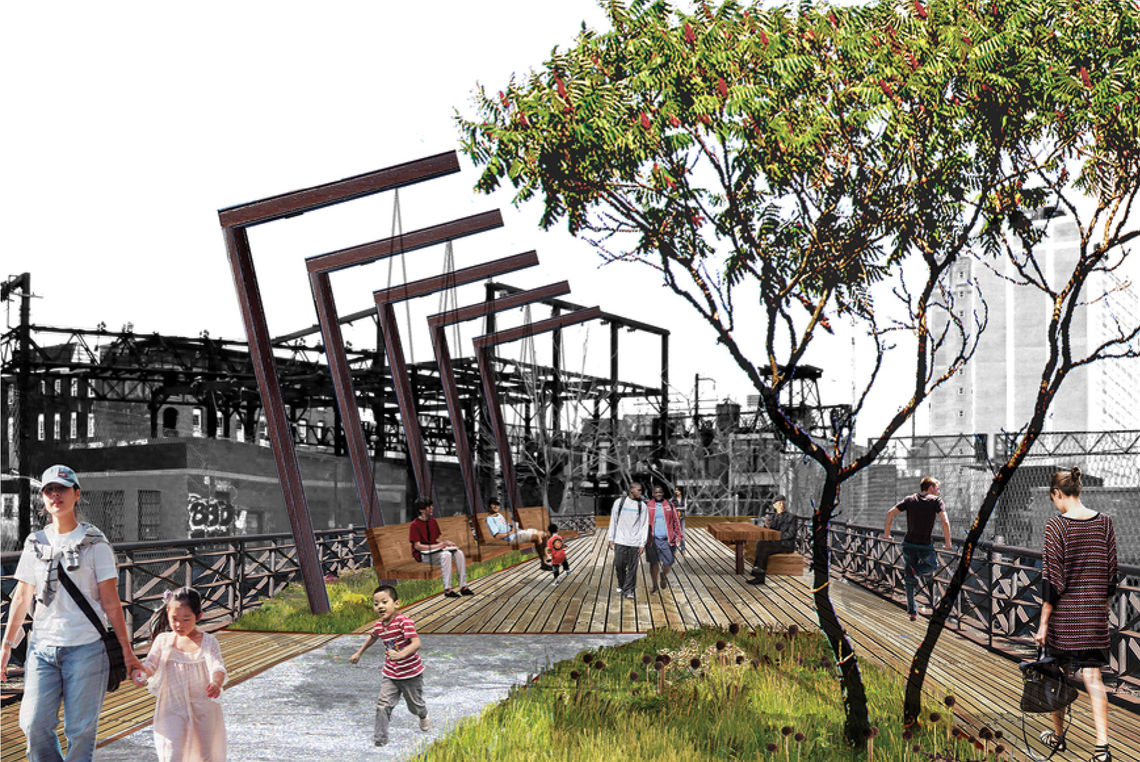
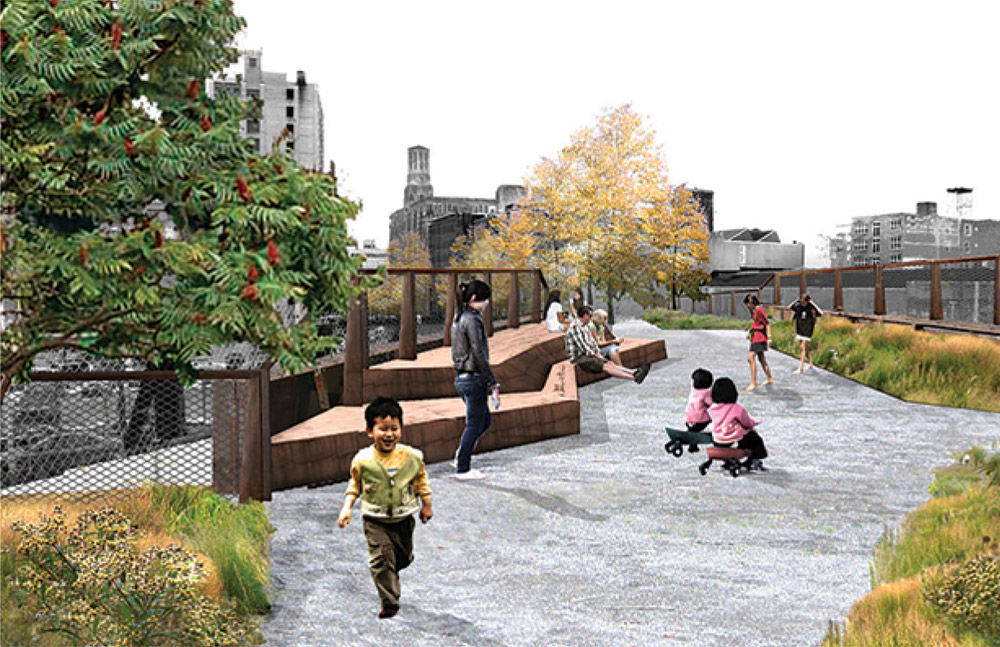
The project has an enormous range of friends and supporters: the Commonwealth of Pennsylvania, the City of Philadelphia, Mayor Jim Kenney, State Representative Michael H. O’Brien, Councilman Mark Squilla, former Councilman Frank DiCicco, the William Penn and Knight Foundations, The McLean Contributionship, a host of individual donors and the Friends of the Rail Park, the grassroots advocacy group that has dramatically expanded the visibility and support for the Viaduct Rail Park through events and social media.
In order to enable a construction start in 2016, the CCD began the competitive bid process in July 2016, based on construction documents prepared by Urban Engineers and Studio|Bryan Hanes, and approved by all relevant City departments. Construction is projected to take 15 to 18 months.
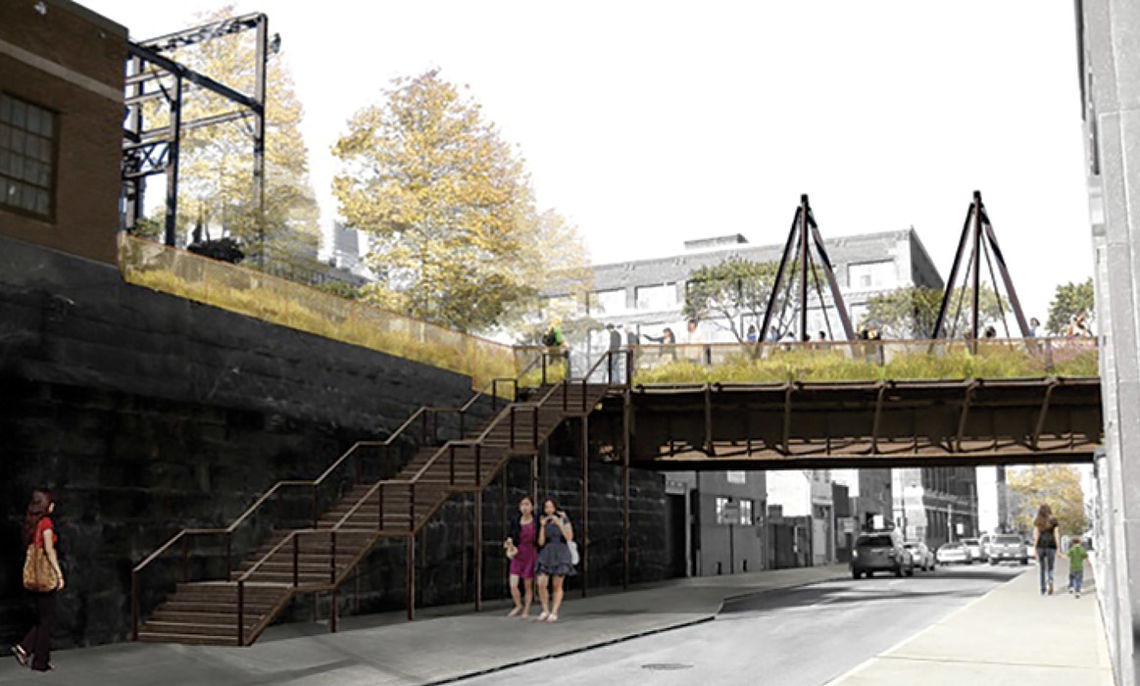
Phase 1 will improve the 1300 block of Noble Street and turn a dilapidated quarter-mile portion of the viaduct that runs southeast from 13th and Noble Streets across 12th Street to Callowhill Street into a vibrant green park with walking paths, landscaping, lighting, benches and swings. SEPTA is leasing the land to the CCD for renovation purposes. Upon completion, SEPTA will
donate the land and the CCD will turn the completed project over to the City of Philadelphia, which will own the park and maintain it in a partnership between the Department of Parks & Recreation, the Friends of the Rail Park, and the CCD.
The new 25,000-square-foot linear park will provide a much-needed green amenity for the Callowhill neighborhood and support the expansion of both Chinatown and the emerging, mixed-use zone on the expanding edge of Center City. The Rail Park will foster new investment in the surrounding neighborhoods and prompt the redevelopment of major vacant buildings and parcels in an area where 32% of the land is still undeveloped. And this is only the first step.
You can help make this transformative project a reality, laying the groundwork for so much more that can follow. Make a gift today by going to supportccdf.org and get more information about the project at centercityphila.org.
Paul R. Levy
President
plevy@centercityphila.org
